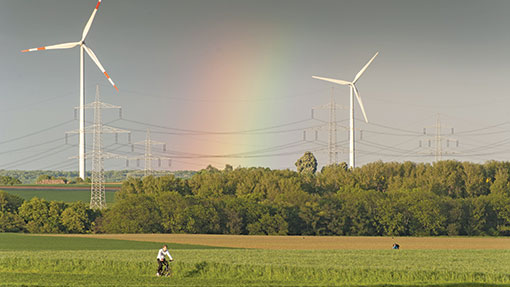Shared ownership of farm renewables set to grow

Pressure is growing on renewable energy developers to help local communities invest in their projects. Paul Spackman reports.
Shared ownership of large-scale renewable energy installations between local communities and developers could become much more common.
By 2015 the government wants it to be “the norm” for developers to at least offer communities the chance to buy into larger projects and representatives of the renewables industry have recently published draft proposals outlining how this could work.
The Shared Ownership Taskforce Action Plan explains what is required for shared ownership to work and describes various investment models that could be used (see “Shared ownership options”, below).
The draft voluntary guidelines apply to commercial developer-led projects costing more than £2.5m, while those costing less than that, or producing solely for their own consumption, or exporting to heat networks, are not expected to offer community ownership.
“It’s always good practice to be as inclusive of the community as you can be for any size project,” said Gaynor Hartnell, community engagement adviser, at the Renewable Energy Association. While shared ownership was to be welcomed and could potentially help get some schemes through the planning process, she acknowledged it was not necessarily right for all communities or all projects and brought added complications for developers.
But shared community ownership potentially opened up a new source of finance for developers, said Matt Hindle, policy manager at the Anaerobic Digestion and Biogas Association. “Given that funding is still difficult in some areas, anything that opens up opportunities for finance is welcome, provided it’s done in a way the doesn’t over-burden developers.”
The complexity and risk profile of technologies such as AD could still make it difficult to attract community funding, especially for plants that were based on a more varied feedstock supply (for example, several bought-in waste streams), he added. Smaller, simpler farm-based plants using straightforward crop or livestock-derived feedstocks could therefore potentially be more attractive. “Community investment isn’t widely used in AD at the moment, so any proposals will take time to bed in.”
More support
Useful links
- www.gov.uk/community-energy
- www.communityenergy
scotland.org.uk
- www.energysavingtrust.org.uk/communities
- www.renewableuk.com
- www.abundancegeneration.com
Farmers Weekly is not responsible for the content of external sites
Greater support for community projects through the Feed-in Tariffs would be vital for driving more shared ownership, said the Solar Trade Association’s Leonie Greene, who cautioned against adding further policy that could deter potential investors – whether private companies or community groups.
The support system needed reforming, as it still failed to do enough for mid-scale (about 150kW) solar in particular, and the proposed ending of Renewables Obligation support for large-scale solar created further uncertainty, she said.
Direct investment through “crowd funding” finance schemes, such as that offered by Abundance, were becoming increasingly popular and had the most potential for expanding community involvement, she suggested.
Abundance allows any adult to choose one or more energy projects to invest in through taking out a debenture. This long-term contract (typically 20-25 years) represents an unsecured loan to the company and pays a cash return twice a year. That payment is made up of an income payment and an equal repayment of capital.
Three types of debenture are available: variable, fixed or inflation-linked. Variable return debentures pay a fixed percentage of the profits generated from the project’s electricity sales, while fixed-return schemes are based on a set rate of return on the money invested. Inflation-linked debentures pay a return on capital linked to RPI.
Members can also pledge support for a proposed project in the planning stages or earlier, which it is hoped will drive future uptake of renewable technologies.
The consultation on the Shared Ownership Taskforce report runs until 29 August 2014. See the taskforce’s document.
Shared ownership options
- Split ownership: A legally recognised community enterprise (for example, a development trust, co-operative society, limited company) raises funds to buy a proportion of the development’s physical assets. They may then receive a share of income and meet the relevant share of costs, although individual agreements vary.
- Shared revenue: A community enterprise buys the rights to a specified proportion of future profits from the scheme (a percentage of energy output, less operating costs), but does not own a physical asset. A typical investment is roughly equivalent to 5% of the project’s capital cost.
- Joint venture: The energy firm and community enterprise work together to develop, own and manage a project.
- Debt-based crowd funding: Members of the public are given the opportunity online to invest in a renewable energy project or to own a share of a company’s debt. Minimum investment levels tend to be low (for example from £5). Debt-based crowd funding is due to become ISA-eligible from 2015. Stakes can be sold on by individual investors.
- The government wants more renewable energy project developers to encourage local communities to invest.
